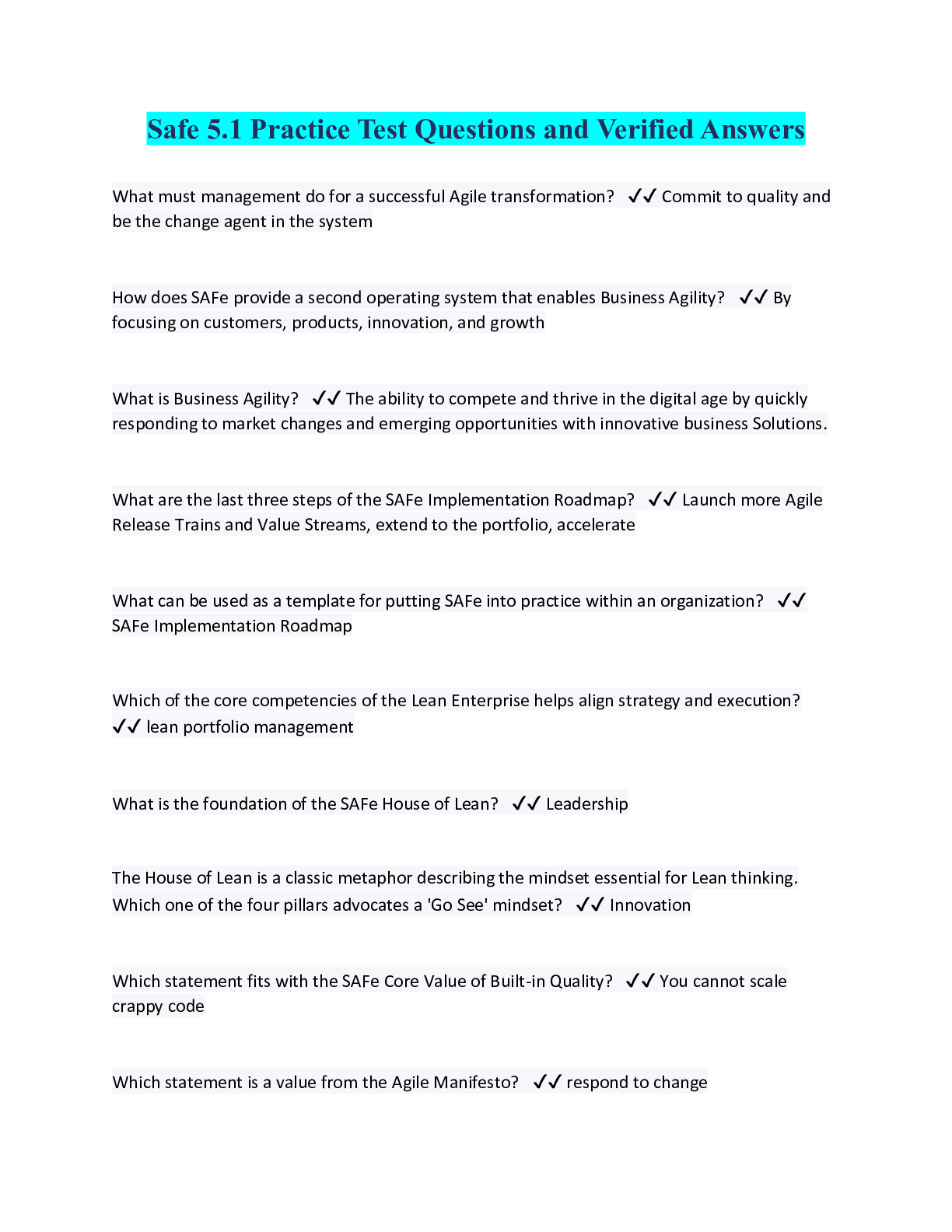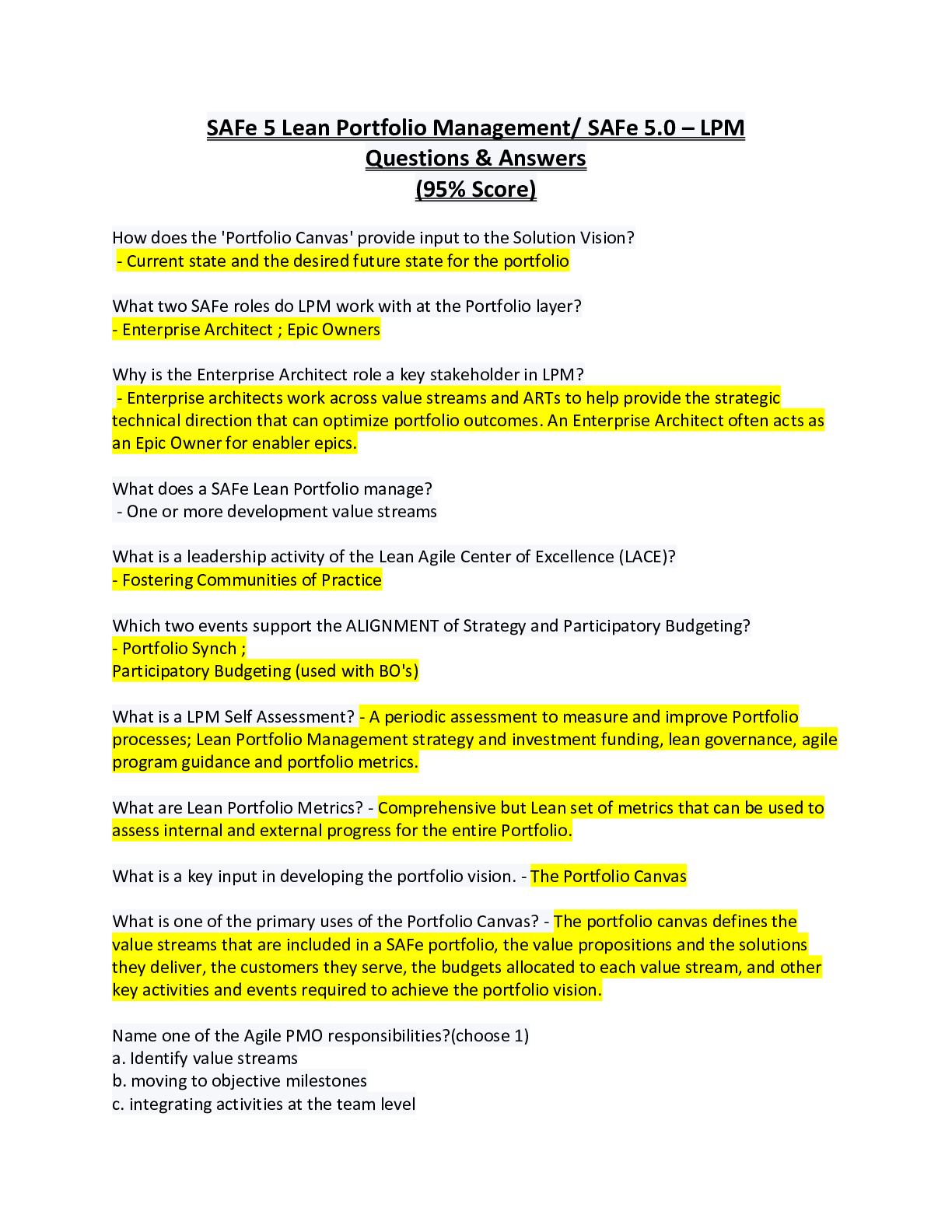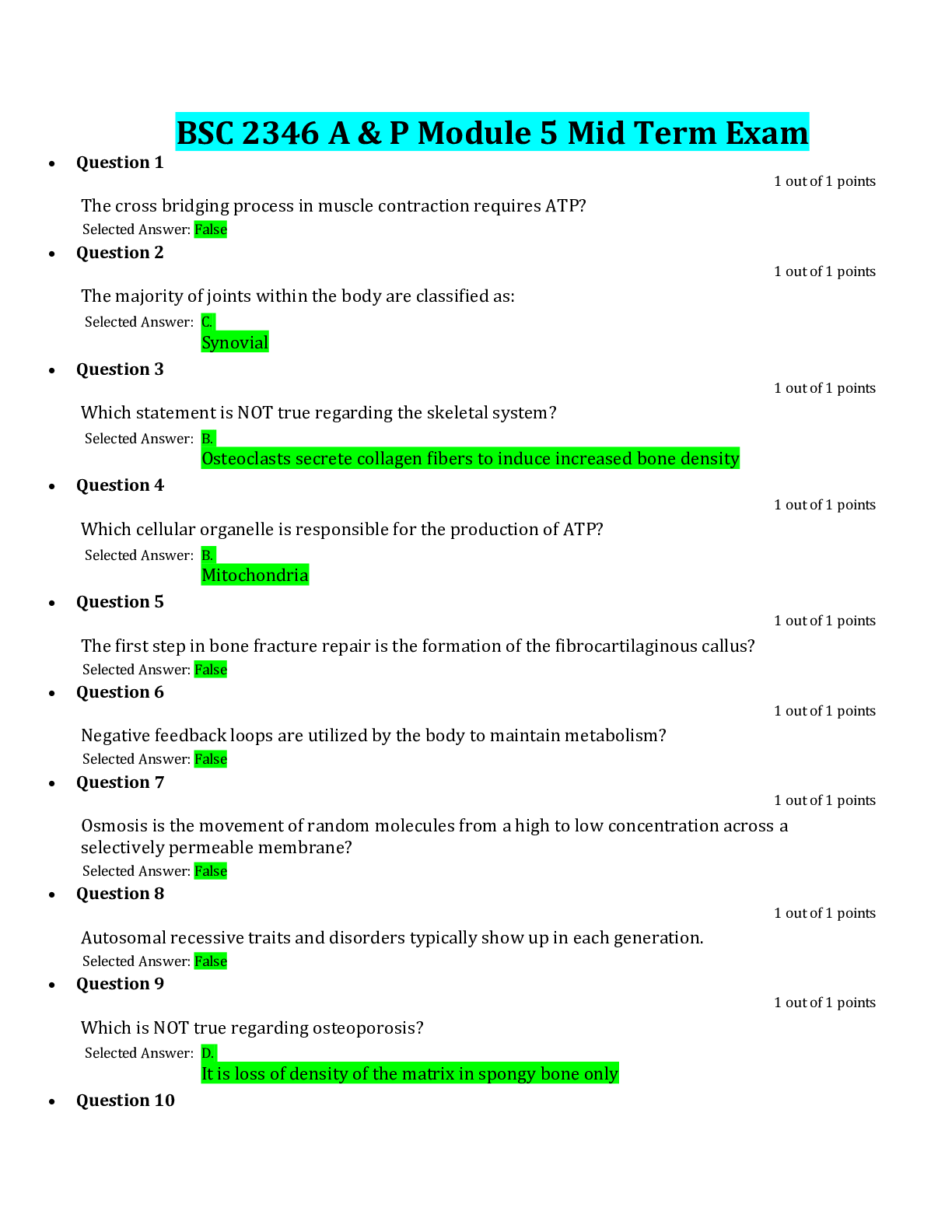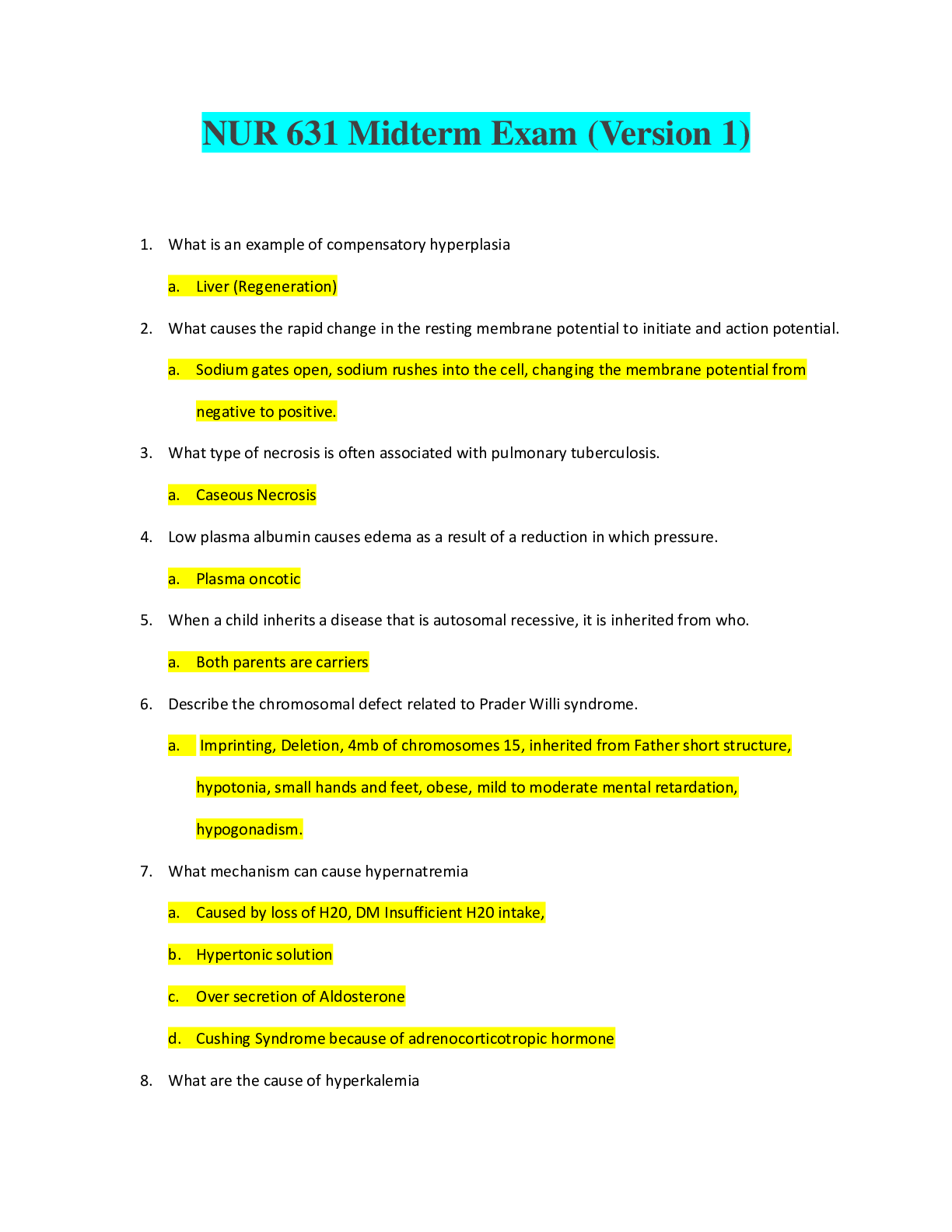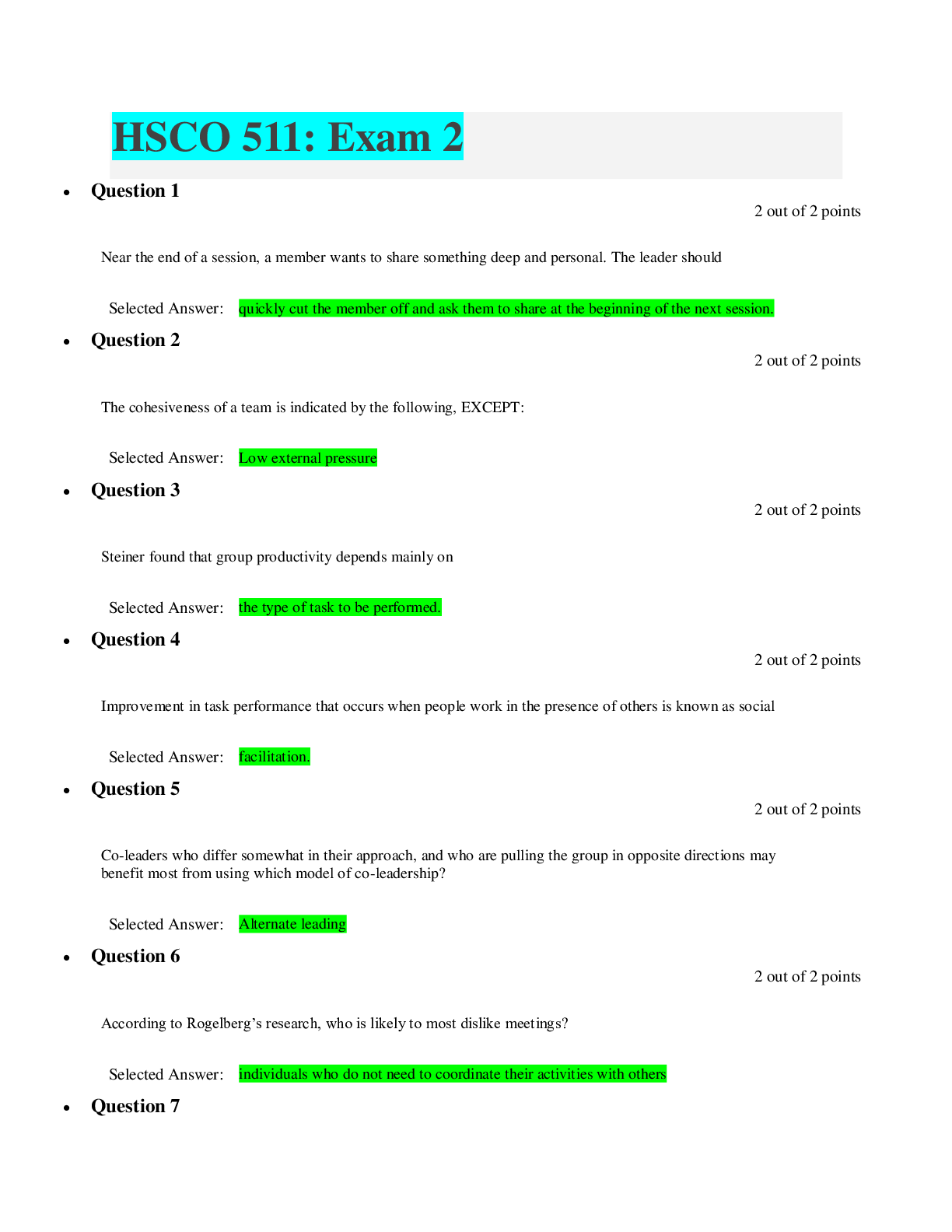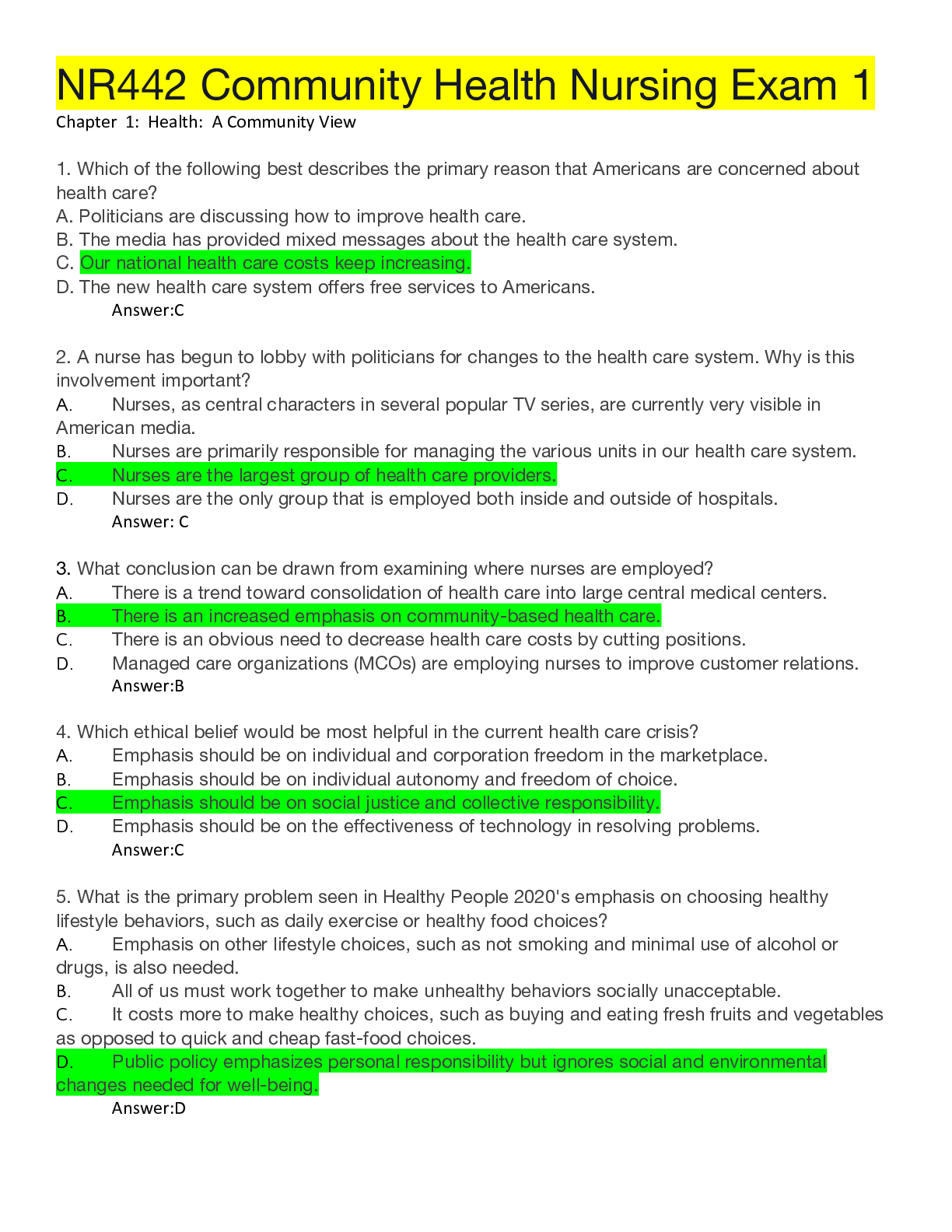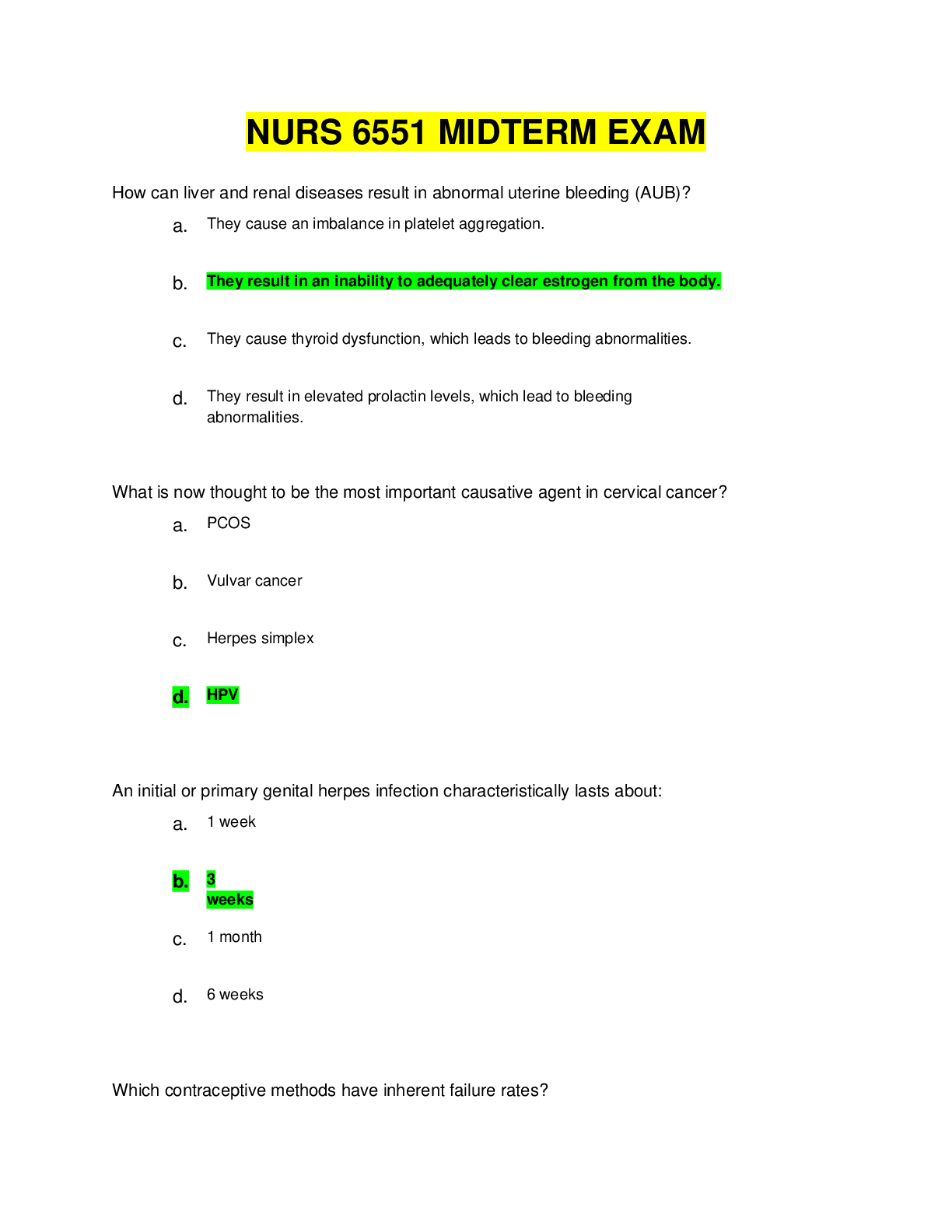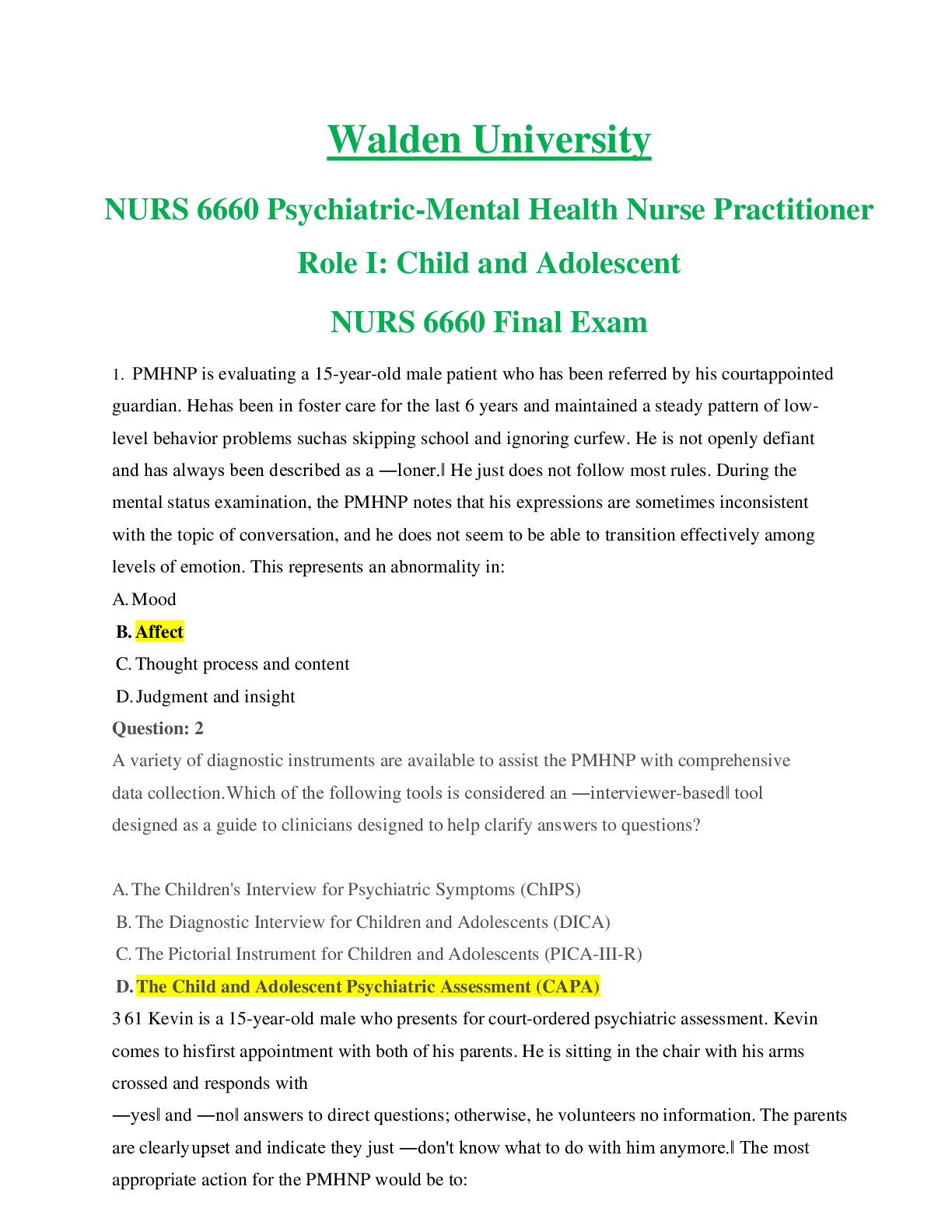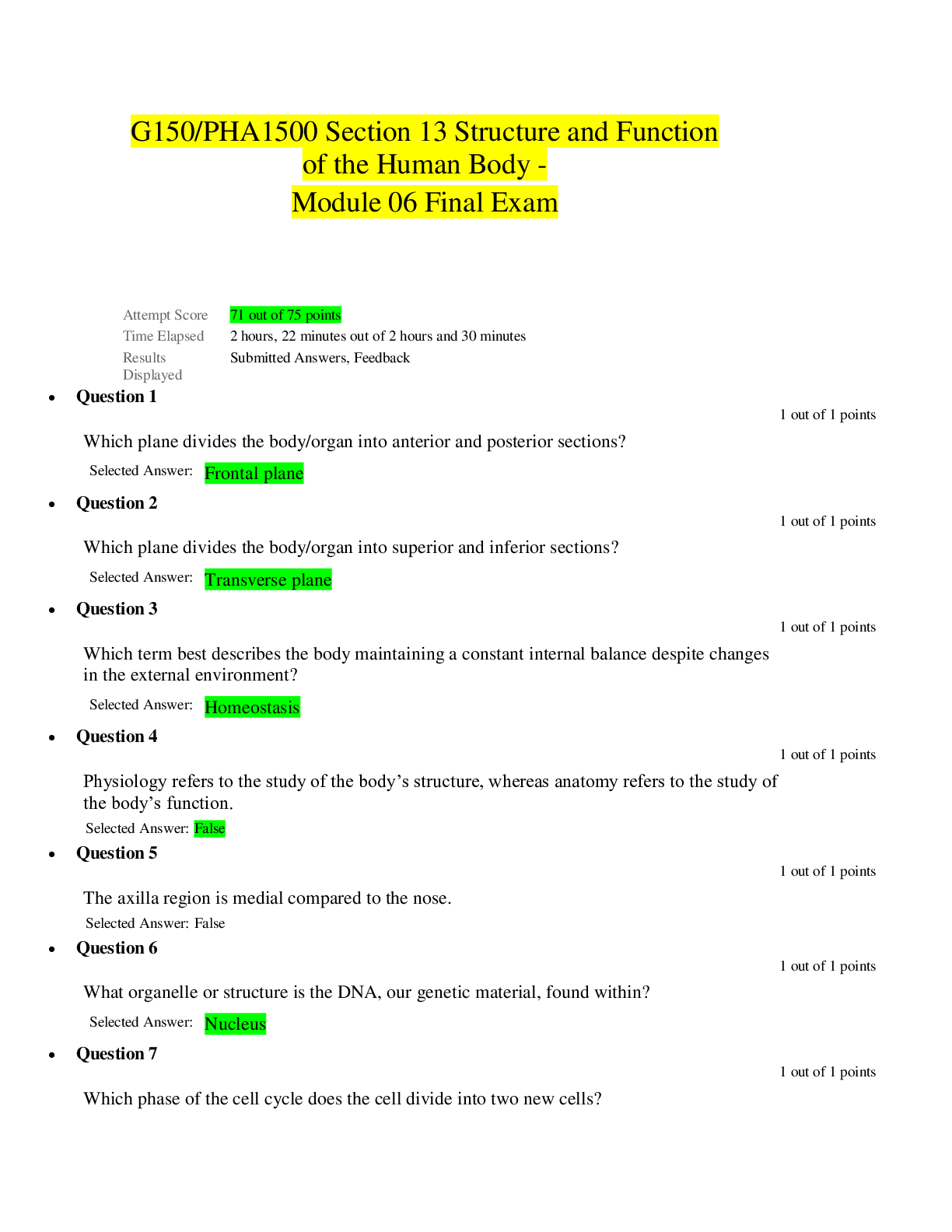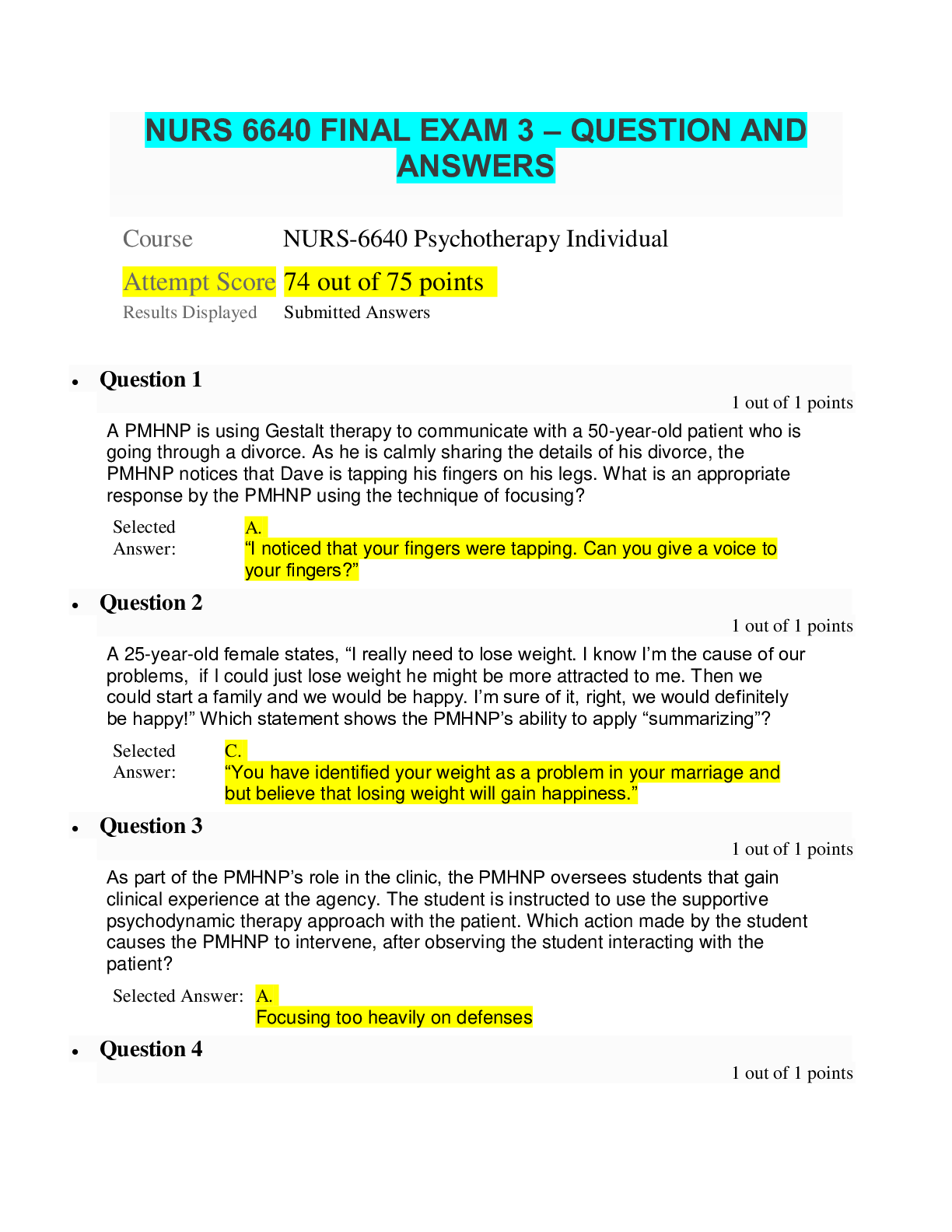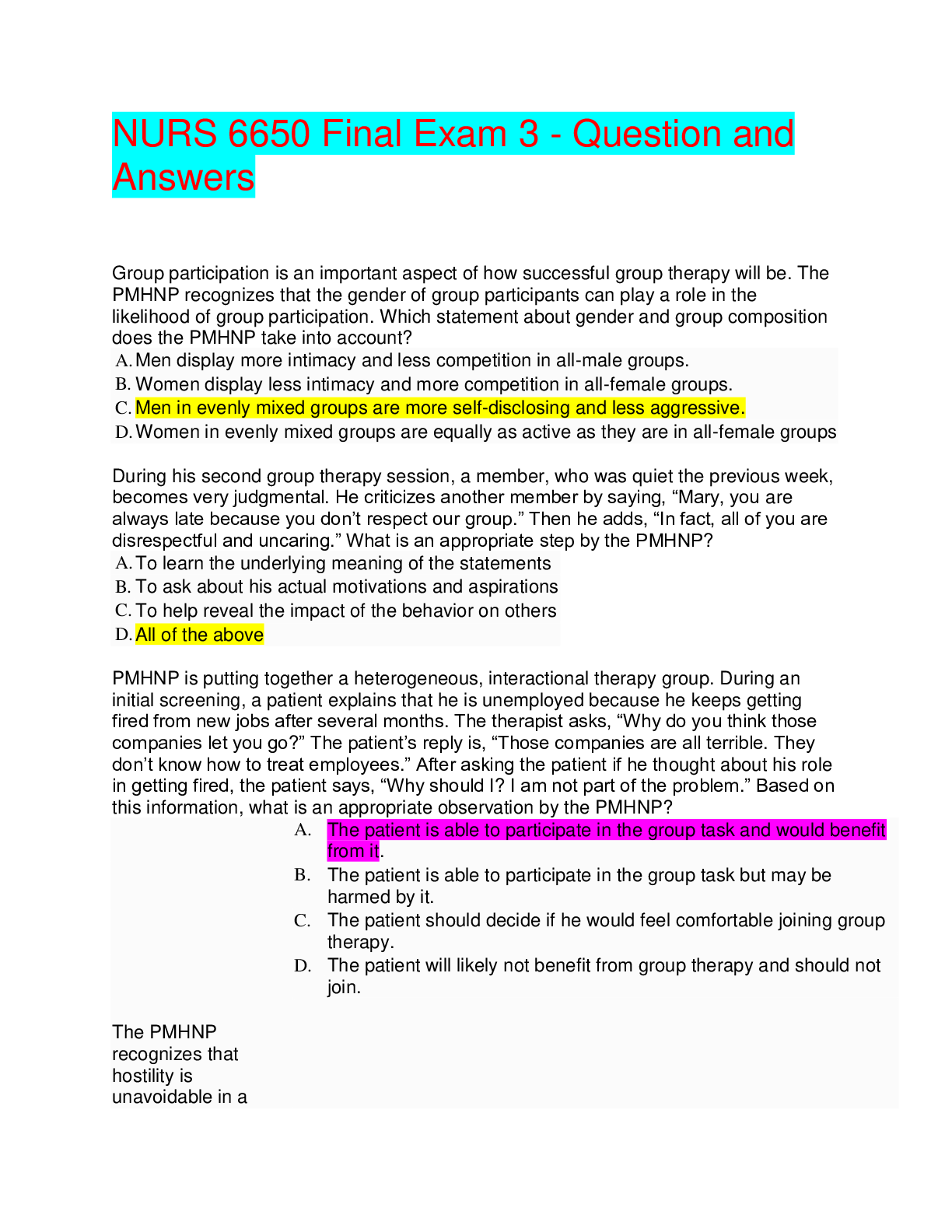Health Care > EXAM > HLTH 4200 Final Exam 3 Answers with every single answer feedback and guide (Walden) 2019. 125/125 po (All)
HLTH 4200 Final Exam 3 Answers with every single answer feedback and guide (Walden) 2019. 125/125 points.
Document Content and Description Below
• Question 1 • 5 out of 5 points The occurrence in a community or region of cases of an illness, specific health behavior, or other health related events clearly in excess of normal expec... tancy is known as a(n): • Question 2 • 5out of 5 points In a study 10 patients were each followed for a total of 5 years; 6 patients were each followed for a total of 4 years; and 11 patients were each followed for a total of 3 years. How many person-years of follow-up did the study include? • 5 out of 5 points Which of the following historic individuals conducted the classic study linking a cholera epidemic with contaminated water. • Question 4 • 5 out of 5 points The epidemiologic triad includes all of the following except: • Question 5 • 5 out of 5 points Host factors in the causation of disease include: • Question 6 • 5 out of 5 points ________________is the time interval between exposure to an infectious agent in a host and the appearance of the first symptoms of the condition in that host. • Question 7 • 5 out of 5 points Which of the following is a measure of the severity of the disease? • Question 8 • 5 out of 5 points Descriptive epidemiology includes all EXCEPT: Selected Answer: Why Correct Answer: Why Answer Feedback: That's right. To review the information in greater detail, see Chapter 4, pp. 142-143 of your text. • Question 9 • out of 5 points The mid-year population of City X was 175,000 in 2005. The number of newly diagnosed cases of TB to residents of the city in 2005 was 25. The number of active TB cases on June 30, 2005 was 150. The cumulative incidence of TB in 2005 in this city was: Selected Answer: 86 per 100,000 Correct Answer: 14 per 100,000 Answer Feedback: That is incorrect. You will find a discussion of this topic in Chapter 3, pp. 101-103 of your text. • Question 10 • 5 out of 5 points The mid-year population of city X was 175,000 in 2005. The number of newly diagnosed cases of TB to residents of the city in 2005 was 25. The number of active TB cases on June 30, 2005 was 150. The point prevalence of active TB on June 30, 2005 in this area was: • Question 11 • 5 out of 5 points • Question 12 • 5 out of 5 points What would be the best source of information on adult and infant mortality? • Question 13 • 5 out of 5 points Which of the following data sources is most likely to be representative of the general health status of a population? • Question 14 • 5 out of 5 points Which of the following reasons might account for place variation in disease? • Question 15 • 5 out of 5 points To compare the frequency of hypertension in the white and non-white population surveyed, the most appropriate measure is the: • Question 16 • 5 out of 5 points What factors should be considered in measuring true long-term changes in mortality rates due to a specific disease? • Question 17 • 5 out of 5 points Those members of the population who are capable of developing a disease or condition are known as: • Question 18 • out of 5 points The risk of acquiring a given disease during a time period is best determined by: • Question 19 • out of 5 points Assume in an unmatched case control study that 30% of 100 cases had an exposure of interest and 15% of 200 controls had the exposure of interest. What is the odds ratio associated with the exposure to disease? Answer Feedback: That is incorrect. You will find a discussion of this topic in Chapter 6, pp. 269-270 of your text. • Question 20 • 5 out of 5 points A major advantage of cohort studies over case-control studies with respect to the role of a suspected factor in the etiology of a disease is that: • Question 21 • 5 out of 5 points Epidemiologic measures provide the following types of information: • Question 22 out of 5 points Incidence and prevalence data have different applications in public health. To provide a direct estimate of the risk of developing a disease is a description that pertains to: • Question 23 • 5 out of 5 points The choice of behavioral factors that affect how we live is known as: • Question 24 • 5 out of 5 points The study of the roles of consumption of high-fat foods and sedentary lifestyle in health is the domain of: • Question 25 • out of 5 points Incidence and prevalence data have different applications in public health. To provide a direct estimate of the risk of developing a disease is a description that pertains to: [Show More]
Last updated: 1 year ago
Preview 1 out of 7 pages
Instant download

Buy this document to get the full access instantly
Instant Download Access after purchase
Add to cartInstant download
Reviews( 0 )
Document information
Connected school, study & course
About the document
Uploaded On
Oct 08, 2019
Number of pages
7
Written in
Additional information
This document has been written for:
Uploaded
Oct 08, 2019
Downloads
0
Views
81

